

Max Davies
How Audi, BMW, Honda, Mercedes-Benz, and Suzuki started out in Australia, and where they are now
1 Hour Ago

Senior Contributor
Toyota Australia has imported 20 second-generation Mirai hydrogen fuel-cell electric vehicles (FCEVs) for its latest round of fleet trials with “progressive businesses and organisations”.
The market leader has also commissioned the state of Victoria’s first commercial-grade permanent hydrogen production, storage and refuelling facility at its old manufacturing site in Melbourne’s west to run them.
The announcements come less than a week after Hyundai launched a fleet of 20 Nexo FCEVs for use by the ACT government, to be run off a new renewably-driven hydrogen refueller located in Canberra.

Thus it might be said that hydrogen FCEVs are having a brief moment in the sun, though the wider industry continues to focus more on battery-electric vehicles (BEVs) for most non-heavy-industry purposes.
The rather fetching new Mirai FCEV sedan is a massive step up over the old model reviewed here – a small number of which took part in Australian trials with organisations such as Hobson’s Bay City Council and AusNet Services. These vehicles were refuelled from a small mobile hydrogen refueller.
The sleek-looking new Mirai has three onboard tanks storing a total of 5.6kg of pressurised hydrogen. It can be refuelled in five minutes (quite unlike a BEV) and has a driving range of 650km per fill.
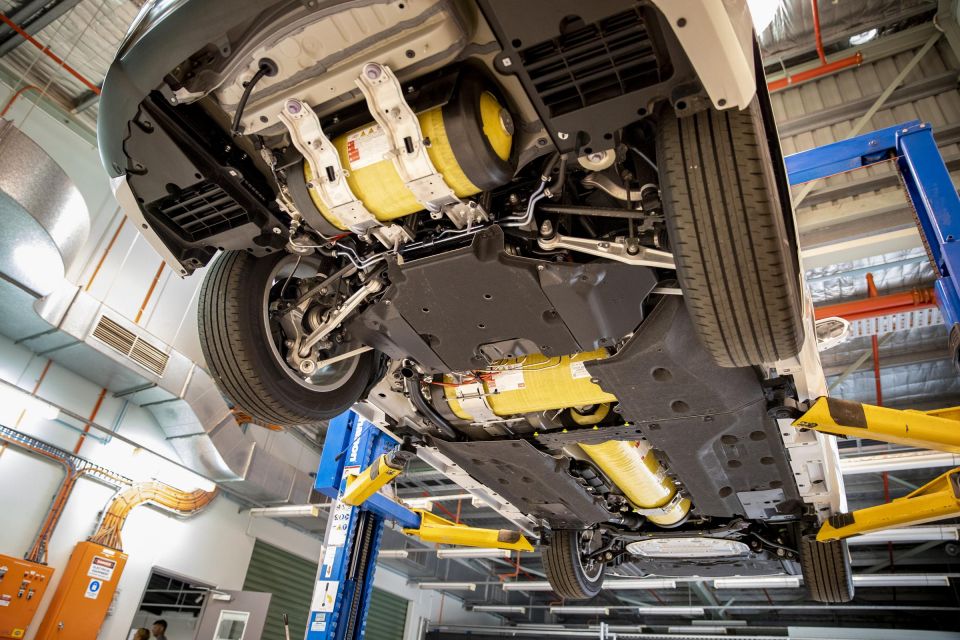
The Mirai’s rear wheels are driven by a 134kW electric motor powered by a fuel cell.
This fuel cell combines the tanked hydrogen with atmospheric oxygen, with the resulting chemical reaction creating useable electricity.
The only emission from the tailpipe from this process is pure water.
The new Mirai can dash off the zero to 100km/h run in a claimed 9.2 seconds.
The upsides of hydrogen FCEVs are their long potential zero-CO2 range, quick refill times, and lack of heavy storage batteries that degrade payload potential.
The downsides are reduced energy efficiency next to BEVs, lack of fuelling infrastructure, and higher prices due to lack of scale and mechanical complexity.
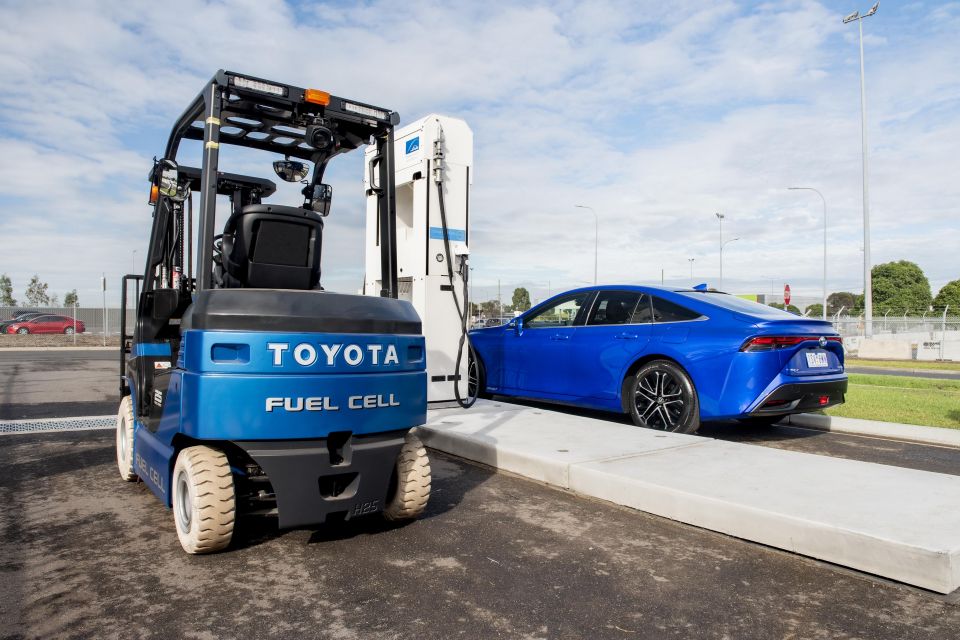
Moreover, even if the government’s long-held goal of getting hydrogen down to $2.00/kg at wholesale comes to fruition, it’ll still cost more to top up an FCEV car than it will to charge a BEV off-peak.
FCEVs are also controversial since much of the world’s hydrogen is made through fossil-fuel reformation, which is hardly ‘green’.
However, Australia’s various state and federal governments are unanimously supporting the rollout of green hydrogen production sites across the land, with our Asian neighbours to the north keen to buy future stored power in compressed H2 gas from us.

Consider a conversation this writer had with Hyundai Motor senior vice president of Hyundai Fuel Cell R&D, Dr Sae Hoon Kim, during 2020.
“Australia has one of the biggest potentials for creating hydrogen, Australia alone can produce all the energy for the world… so bless Australia, I think, because you have been selling coal and now you can also export the sunshine,” he said, alluding to using solar power to drive electrolysis to make green hydrogen.
Indeed, Toyota’s Melbourne hydrogen refueller uses solar power stored in a battery (there’s also the option of drawing on the main grid if need be) to power electrolysis (electricity through water) that isolates and creates the hydrogen.
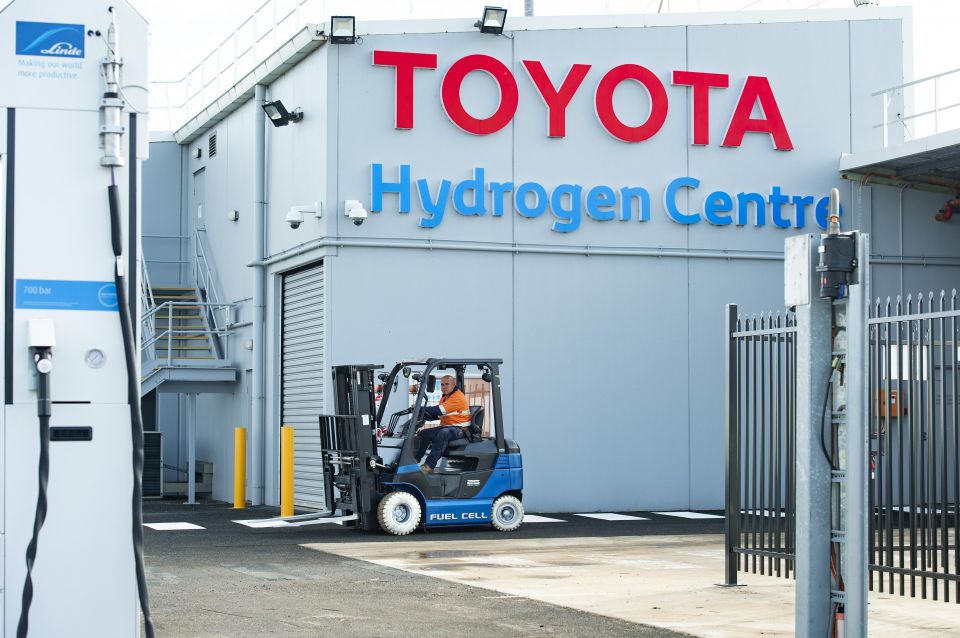
The hydrogen is then stored in a bank of storage tubes at medium and high pressure to be able to refuel both the fuel-cell forklifts that Toyota uses in other parts of the Altona complex, and the Mirai.
Dr Patrick Hartley from the CSIRO’s Hydrogen Industry Mission said the following:
“The infrastructure which is being commissioned at this new Toyota facility will not only progress the deployment of hydrogen vehicles, which can make a major contribution to helping our transport sector navigate Australia’s energy transition, but it will also serve as a beacon to other companies looking to invest in hydrogen transport technology.”
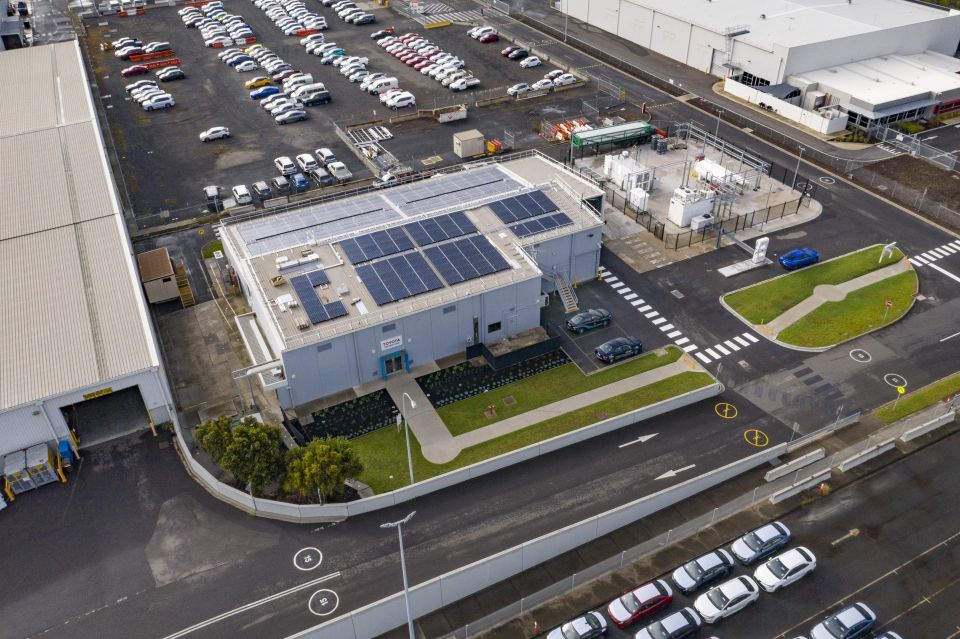
Toyota Australia President and CEO Matthew Callachor said the Toyota Hydrogen Centre was built to showcase the benefits of FCEVs.
“Globally, Toyota is committed to achieving zero CO2 emissions from its vehicles and plants under the Toyota Environmental Challenge 2050 and the commissioning of our hydrogen refuelling facility here today is an important step towards achieving that goal,” he said.
“By demonstrating the viability of renewably-produced hydrogen as an automotive and energy fuel through this project, Toyota and its partners in government and business are pioneering a cleaner, more sustainable future that will encourage the further acceptance of this technology.
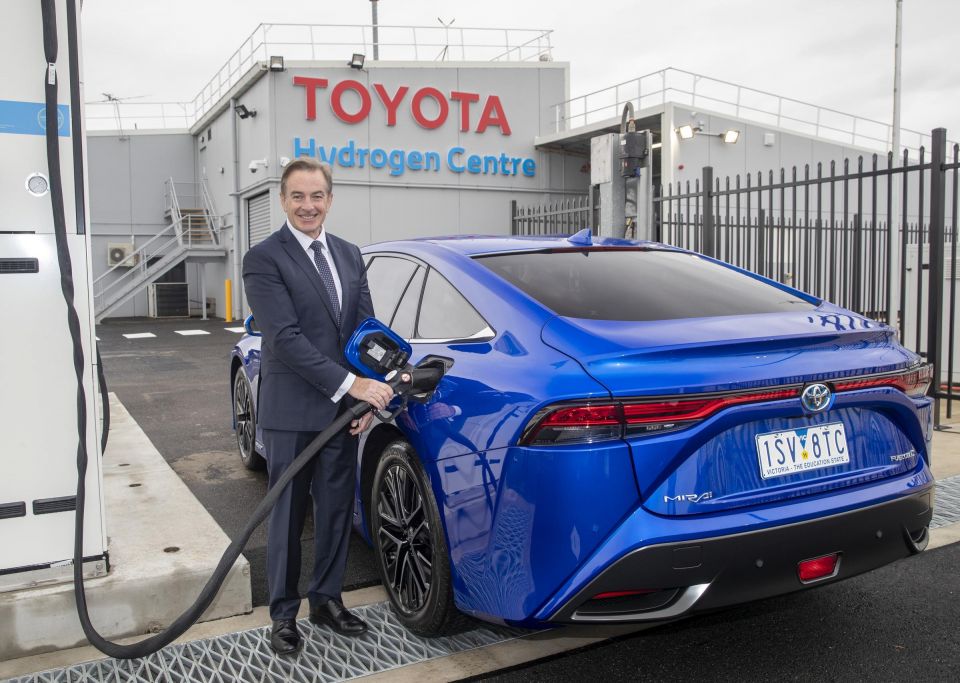
“We would like to thank our government partners for their assistance in bringing this project to fruition and those progressive forward-thinking business partners who will lease the 20 Mirai sedans we have brought into Australia to prove that hydrogen and fuel cell vehicles can, and will, play an important role in helping to move us towards a more sustainable and greener future.”
Where expert car reviews meet expert car buying – CarExpert gives you trusted advice, personalised service and real savings on your next new car.


Max Davies
1 Hour Ago


William Stopford
1 Hour Ago


Derek Fung
2 Hours Ago


Max Davies
9 Hours Ago


William Stopford
1 Day Ago


Ben Zachariah
1 Day Ago